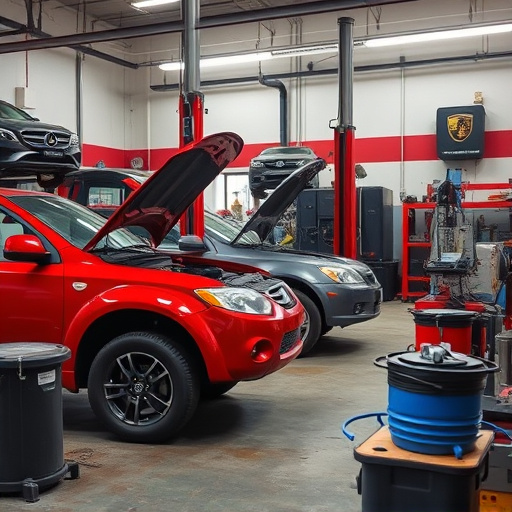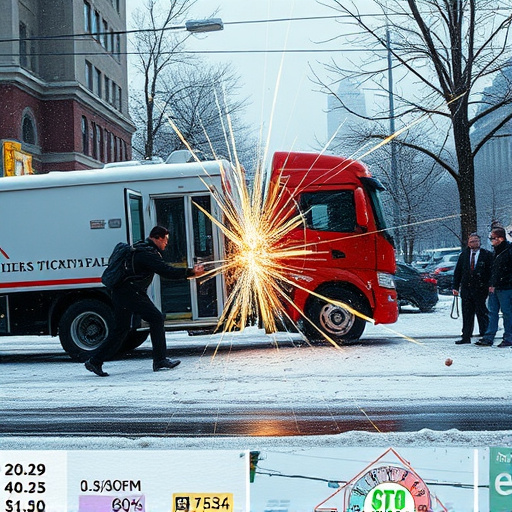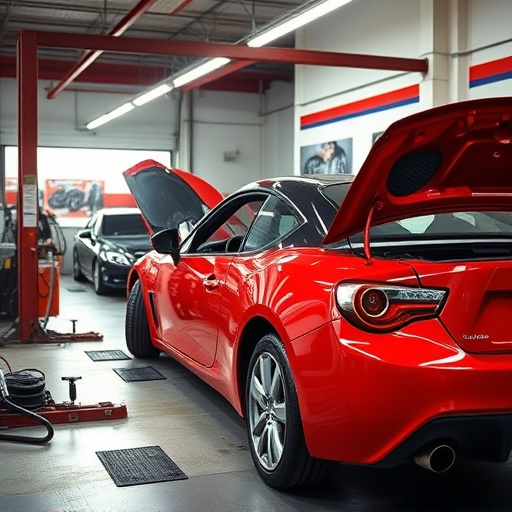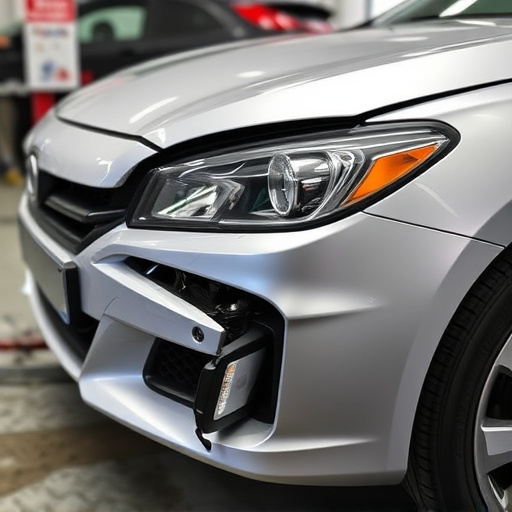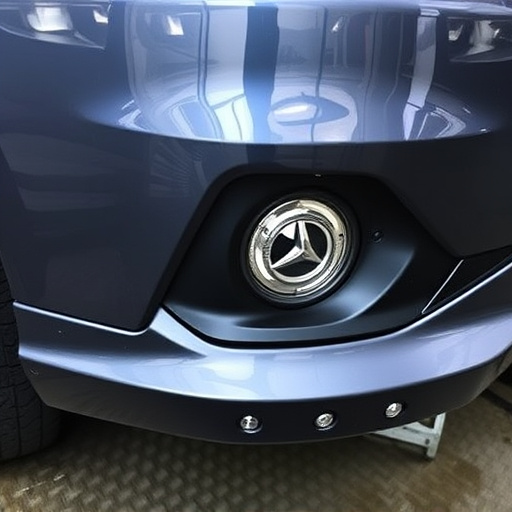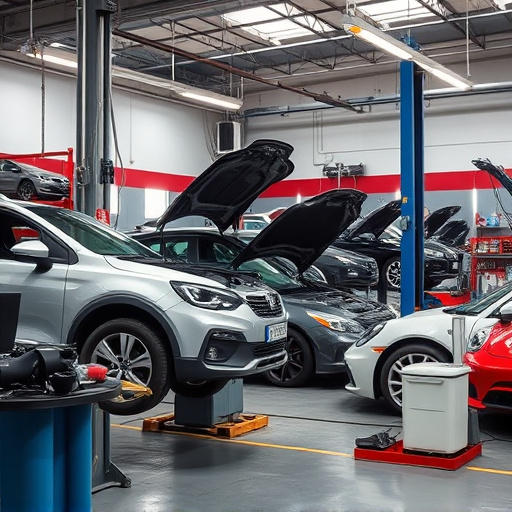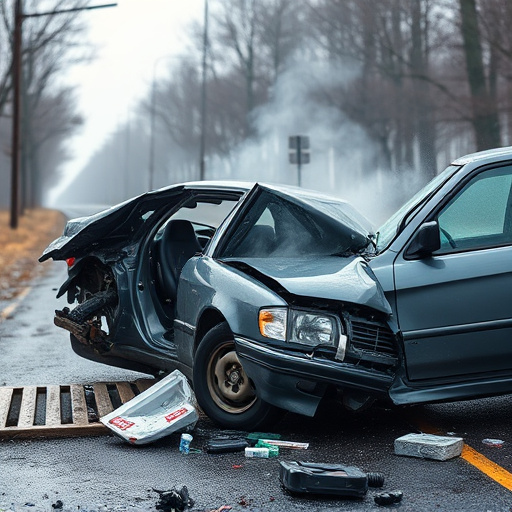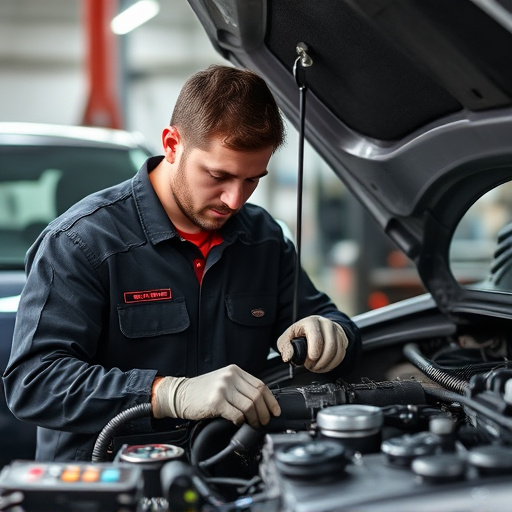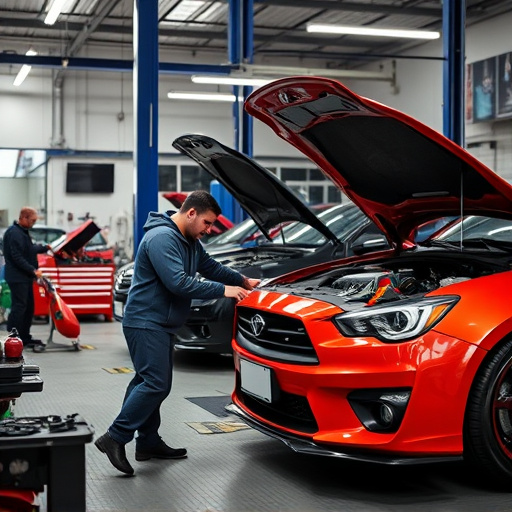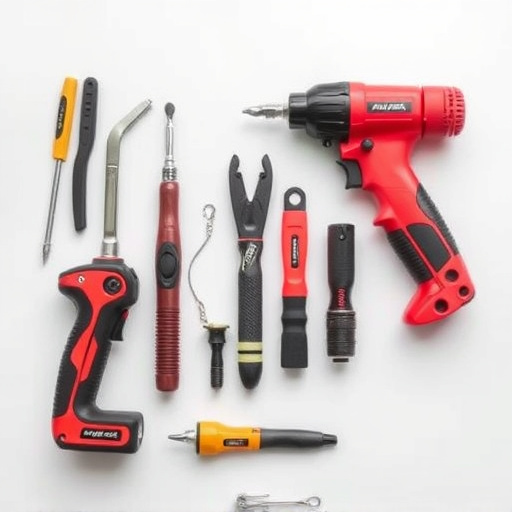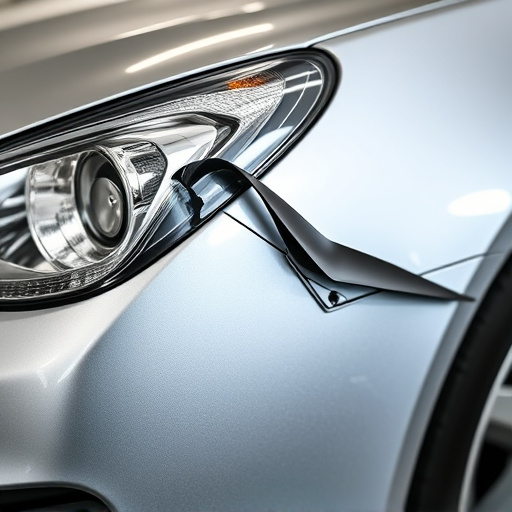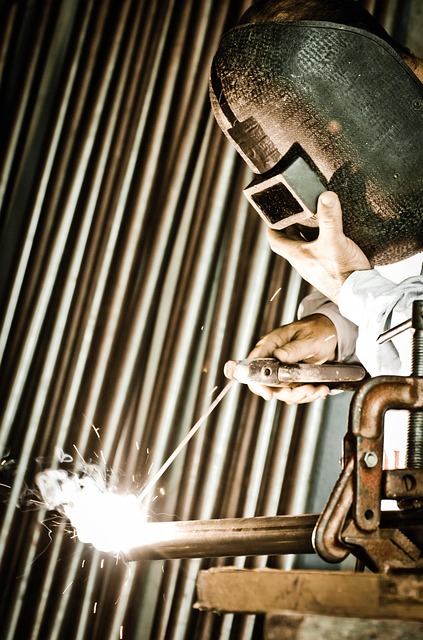Computerized paint matching technology revolutionizes vehicle repair, particularly in tire services and Mercedes Benz collision repair, through precise algorithms analyzing vast color databases to detect subtle differences for exact reproduction. This method, involving scanning damaged areas against digital libraries, outperforms traditional techniques with speed, accuracy, and consistent high-quality finishes that preserve aesthetics and resale value. Despite some barriers like specialized equipment and training, continuous advancements make it an increasingly reliable solution across diverse auto repair services.
In today’s automotive industry, precise paint matching is crucial for quality and customer satisfaction. Computerized paint matching technology has emerged as a game-changer, promising accurate color replication. However, numerous myths surround its capabilities and limitations. This article aims to demystify this innovative system by delving into its basics, debunking common misconceptions, and exploring its advantages and constraints in real-world applications, emphasizing the importance of understanding computerized paint matching technology for optimal results.
- Understanding Computerized Paint Matching Basics
- Debunking Common Myths About This Technology
- Advantages and Limitations in Practice
Understanding Computerized Paint Matching Basics
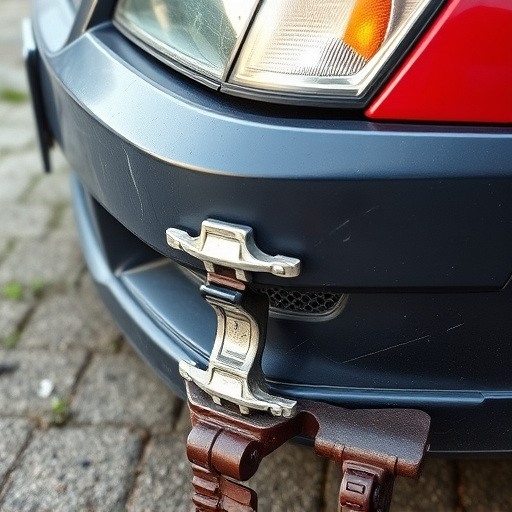
Computerized paint matching technology has revolutionized vehicle repair processes, particularly in tire services and Mercedes Benz collision repair. At its core, this innovative system utilizes advanced algorithms to analyze and match the exact color specifications of a vehicle’s paint. By comparing millions of color combinations, these systems can identify even the subtlest variations, ensuring precise color replication. This is especially crucial for achieving factory-like finishes in vehicle repair, enhancing aesthetics and maintaining resale value.
The technology works by taking detailed scans or images of the damaged area, which are then fed into a specialized software. This software cross-references these data against an extensive digital library of paint codes and formulations. The process yields highly accurate results, eliminating the need for traditional, time-consuming methods that relied heavily on human judgment. Consequently, computerized paint matching not only speeds up repair processes but also guarantees consistent, high-quality outcomes, elevating the standards in both tire services and Mercedes Benz collision repair.
Debunking Common Myths About This Technology
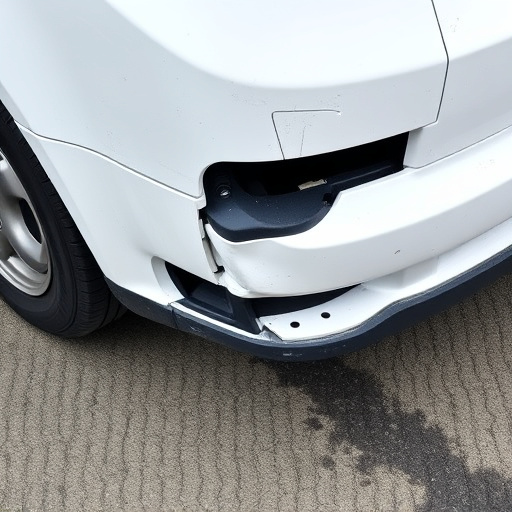
Many misconceptions surround computerized paint matching technology, leading to confusion among those unfamiliar with its capabilities. One common myth is that it cannot accurately match unique or custom colors, but this could not be further from the truth. Advanced algorithms and extensive databases allow for precise recreation of even the rarest hues, ensuring seamless integration in car damage repair and body shop services.
Another widely held belief is that computerized paint matching is too expensive and time-consuming to be viable for most collision repair shops. However, modern systems have become incredibly efficient, offering faster turnaround times and reduced labor costs. This technology not only enhances the accuracy of color matching but also streamlines the process, making it a valuable asset in achieving high-quality finishes during restoration projects.
Advantages and Limitations in Practice
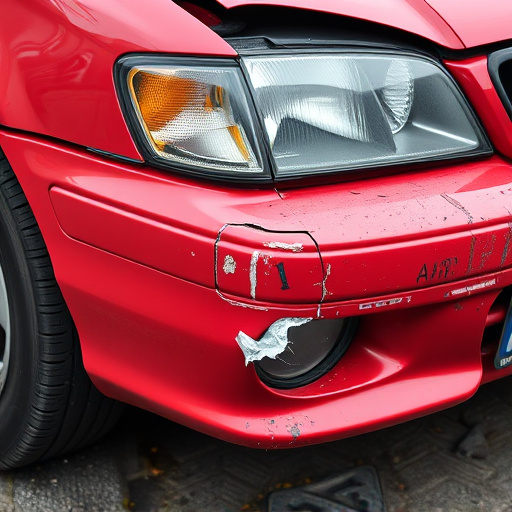
Computerized paint matching technology offers several advantages when it comes to luxury vehicle repair and car paint repair. It utilizes advanced algorithms and databases to analyze and match colors precisely, ensuring a perfect hue every time. This not only saves time but also reduces the risk of human error, resulting in more consistent and high-quality repairs for auto repair services.
However, despite its capabilities, there are limitations in practice. Factors like manufacturing variations, environmental conditions, and the age of the vehicle can still cause color mismatches. Additionally, specialized equipment and training are required to operate these systems effectively, which can be a barrier for some auto repair shops. Nevertheless, ongoing advancements continue to bridge these gaps, making computerized paint matching an increasingly reliable solution for car paint repair across various auto repair services.
Computerized paint matching technology has evolved significantly, offering numerous advantages for the automotive and industrial sectors. By understanding its capabilities and debunking common myths, businesses can harness this innovative tool to streamline their painting processes. While it presents limitations, such as color variations under different lighting conditions, ongoing advancements promise enhanced accuracy and efficiency. Embracing computerized paint matching can lead to improved quality control, reduced waste, and faster production times, making it a game-changer for modern manufacturing.
